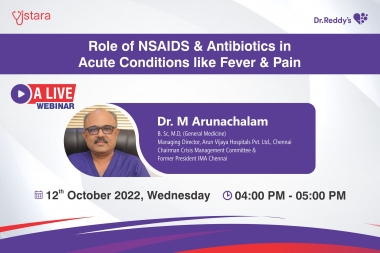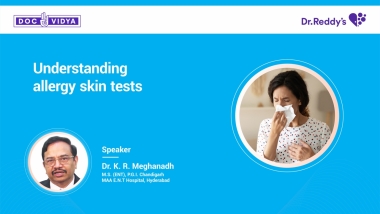test
test
test
test
test
test
test
test
test
test
Webinars
Displaying 17 - 20 of 23Displaying 17 - 20 of 23Videos
Displaying 17 - 20 of 132Is intranasal corticosteroid preferred in treatment for Allergic Rhinitis?
Fluticasone furoate: The preferred intranasal corticosteroid for Allergic Rhinitis
Is intranasal corticosteroid preferred in treatment for Allergic Rhinitis?
Fluticasone furoate: The preferred intranasal corticosteroid for Allergic Rhinitis
Is intranasal corticosteroid preferred in treatment for Allergic Rhinitis?
Fluticasone furoate: The preferred intranasal corticosteroid for Allergic Rhinitis
Fluticasone furoate: The preferred intranasal spray in Allergic Rhinitis
Criteria for choosing the most appropriate intranasal spray for Allergic Rhinitis
Fluticasone furoate: The preferred intranasal spray in Allergic Rhinitis
Criteria for choosing the most appropriate intranasal spray for Allergic Rhinitis
Fluticasone furoate: The preferred intranasal spray in Allergic Rhinitis
Criteria for choosing the most appropriate intranasal spray for Allergic Rhinitis
Levocetirizine in the management of Allergic Rhinitis
Understanding the approach towards levocetirizine in the management of Allergic Rhinitis
Levocetirizine in the management of Allergic Rhinitis
Understanding the approach towards levocetirizine in the management of Allergic Rhinitis
Levocetirizine in the management of Allergic Rhinitis
Understanding the approach towards levocetirizine in the management of Allergic Rhinitis
Courses
Displaying 1 - 2 of 2Medshorts
Displaying 17 - 20 of 41
Relationship between changes in physical fitness and cardiovascular risk factors in patients with type 2 diabetes
According to a recent study, involving in physical fitness predicts favorable changes in cardiovascular risk profile in patients with type 2 diabetes. This study’s findings were published in the journal, Diabetes/Metabolism Research and Reviews.
This study was a pre-specified ancillary analysis of a 3-year randomized clinical trial that included 267 physically inactive and sedentary patients. The participants were randomized in a 1:1 ratio to receive either a one-month theoretical and practical counselling each year or standard care. Various parameters such as mean changes in moderate-to-vigorous-intensity physical activity[SB1] (MVPA) from baseline throughout the study period, decrease sedentary-time[SB2] (SED-time), muscle strength, flexibility, cardiorespiratory fitness (VO2max), cardiovascular risk factors and scores were measured.
It was observed that hemoglobin (Hb) A1c and coronary heart disease (CHD) risk scores were decreased with quartiles of VO2max and lower body muscle strength changes. As per the multivariable regression analysis, increases in VO2max independently predicted decreases in HbA1c, diastolic blood pressure (BP), CHD, blood glucose, and total stroke 10-year risk and increases in HDL cholesterol. On the other hand, increases in lower body muscle strength independently predicted decreases in body mass index (BMI), waist circumference, systolic BP, triglycerides, CHD, and fatal stroke 10-year risk.
Based on the above findings, it may be concluded that improvement in physical fitness can predict favorable changes in cardiometabolic risk profile in patients with type 2 diabetes.

Relationship between changes in physical fitness and cardiovascular risk factors in patients with type 2 diabetes
According to a recent study, involving in physical fitness predicts favorable changes in cardiovascular risk profile in patients with type 2 diabetes. This study’s findings were published in the journal, Diabetes/Metabolism Research and Reviews.
This study was a pre-specified ancillary analysis of a 3-year randomized clinical trial that included 267 physically inactive and sedentary patients. The participants were randomized in a 1:1 ratio to receive either a one-month theoretical and practical counselling each year or standard care. Various parameters such as mean changes in moderate-to-vigorous-intensity physical activity[SB1] (MVPA) from baseline throughout the study period, decrease sedentary-time[SB2] (SED-time), muscle strength, flexibility, cardiorespiratory fitness (VO2max), cardiovascular risk factors and scores were measured.
It was observed that hemoglobin (Hb) A1c and coronary heart disease (CHD) risk scores were decreased with quartiles of VO2max and lower body muscle strength changes. As per the multivariable regression analysis, increases in VO2max independently predicted decreases in HbA1c, diastolic blood pressure (BP), CHD, blood glucose, and total stroke 10-year risk and increases in HDL cholesterol. On the other hand, increases in lower body muscle strength independently predicted decreases in body mass index (BMI), waist circumference, systolic BP, triglycerides, CHD, and fatal stroke 10-year risk.
Based on the above findings, it may be concluded that improvement in physical fitness can predict favorable changes in cardiometabolic risk profile in patients with type 2 diabetes.


Relationship between changes in physical fitness and cardiovascular risk factors in patients with type 2 diabetes
According to a recent study, involving in physical fitness predicts favorable changes in cardiovascular risk profile in patients with type 2 diabetes. This study’s findings were published in the journal, Diabetes/Metabolism Research and Reviews.
This study was a pre-specified ancillary analysis of a 3-year randomized clinical trial that included 267 physically inactive and sedentary patients. The participants were randomized in a 1:1 ratio to receive either a one-month theoretical and practical counselling each year or standard care. Various parameters such as mean changes in moderate-to-vigorous-intensity physical activity[SB1] (MVPA) from baseline throughout the study period, decrease sedentary-time[SB2] (SED-time), muscle strength, flexibility, cardiorespiratory fitness (VO2max), cardiovascular risk factors and scores were measured.
It was observed that hemoglobin (Hb) A1c and coronary heart disease (CHD) risk scores were decreased with quartiles of VO2max and lower body muscle strength changes. As per the multivariable regression analysis, increases in VO2max independently predicted decreases in HbA1c, diastolic blood pressure (BP), CHD, blood glucose, and total stroke 10-year risk and increases in HDL cholesterol. On the other hand, increases in lower body muscle strength independently predicted decreases in body mass index (BMI), waist circumference, systolic BP, triglycerides, CHD, and fatal stroke 10-year risk.
Based on the above findings, it may be concluded that improvement in physical fitness can predict favorable changes in cardiometabolic risk profile in patients with type 2 diabetes.

Vitamin C supplementation is safe in patients with community acquired pneumonia
A recent study found that vitamin C supplementation in patients hospitalized with community acquired pneumonia (CAP) is safe and well tolerated. The findings of the trial were published in the journal, Scientific reports.
This trial included 344 patients with moderate or severe CAP on intravenous antimicrobial treatment, who were randomized to receive either 2.5 g 8 hourly of intravenous vitamin C or placebo. Later on, the participants were switched to oral intervention (1 g tds) for 7 days, when they were prescribed oral antimicrobial therapy.
It was observed that the concentrations of vitamin C were 226 µmol/L and 19 µmol/L in the vitamin C and placebo groups, respectively, after 3 intravenous doses. No significant differences between the two groups for cases of death within 28 days, median length of hospital stay, time to clinical stability, or readmission within 30 days were noted.
Based on the above results, it may be concluded that vitamin C doses were safe, well tolerated and saturating in patients with CAP. However, a multicenter trial with 932 participants would be required to study the efficacy of vitamin C in terms of difference in mortality and 200 participants to observe a difference with a composite end-point (e.g. mortality plus discharge post 7 days in hospital).

Vitamin C supplementation is safe in patients with community acquired pneumonia
A recent study found that vitamin C supplementation in patients hospitalized with community acquired pneumonia (CAP) is safe and well tolerated. The findings of the trial were published in the journal, Scientific reports.
This trial included 344 patients with moderate or severe CAP on intravenous antimicrobial treatment, who were randomized to receive either 2.5 g 8 hourly of intravenous vitamin C or placebo. Later on, the participants were switched to oral intervention (1 g tds) for 7 days, when they were prescribed oral antimicrobial therapy.
It was observed that the concentrations of vitamin C were 226 µmol/L and 19 µmol/L in the vitamin C and placebo groups, respectively, after 3 intravenous doses. No significant differences between the two groups for cases of death within 28 days, median length of hospital stay, time to clinical stability, or readmission within 30 days were noted.
Based on the above results, it may be concluded that vitamin C doses were safe, well tolerated and saturating in patients with CAP. However, a multicenter trial with 932 participants would be required to study the efficacy of vitamin C in terms of difference in mortality and 200 participants to observe a difference with a composite end-point (e.g. mortality plus discharge post 7 days in hospital).


Vitamin C supplementation is safe in patients with community acquired pneumonia
A recent study found that vitamin C supplementation in patients hospitalized with community acquired pneumonia (CAP) is safe and well tolerated. The findings of the trial were published in the journal, Scientific reports.
This trial included 344 patients with moderate or severe CAP on intravenous antimicrobial treatment, who were randomized to receive either 2.5 g 8 hourly of intravenous vitamin C or placebo. Later on, the participants were switched to oral intervention (1 g tds) for 7 days, when they were prescribed oral antimicrobial therapy.
It was observed that the concentrations of vitamin C were 226 µmol/L and 19 µmol/L in the vitamin C and placebo groups, respectively, after 3 intravenous doses. No significant differences between the two groups for cases of death within 28 days, median length of hospital stay, time to clinical stability, or readmission within 30 days were noted.
Based on the above results, it may be concluded that vitamin C doses were safe, well tolerated and saturating in patients with CAP. However, a multicenter trial with 932 participants would be required to study the efficacy of vitamin C in terms of difference in mortality and 200 participants to observe a difference with a composite end-point (e.g. mortality plus discharge post 7 days in hospital).

Safety and efficacy of envonalkib in advanced anaplastic lymphoma kinase-positive non-small cell lung cancer
According to a recent study, first-line envonalkib, a novel Anaplastic lymphoma kinase (ALK) inhibitor, is safe and effective for use in advanced ALK-positive non-small cell lung cancer (NSCLC). The results of this study were published in the journal, Signal transduction and targeted therapy.
The multi-center, open-label, randomized phase 3 trial included 264 participants. Those enrolled in the study were randomized in a 1:1 ratio to receive either envonalkib (n = 131) or crizotinib (n = 133).
It was observed that progression-free survival (PFS) as assessed by median independent review committee (IRC) was found to be 24.87 and 11.60 months in the envonalkib and crizotinib groups, respectively. Similarly, IRC-measured objective response rate (ORR) was higher, with longer duration response in the envonalkib group. Even IRC-assessed CNS-ORR was better in participants with baseline brain target lesions who were given envonalkib. The overall survival (OS) rate for 1 year was 90.6% and 89.4% in the envonalkib and crizotinib groups, respectively. Finally, treatment-related grade ≥3 adverse events were 55.73% in the envonalkib and 42.86% in the crizotinib groups, respectively.
Thus, the results of the study indicate that envonalkib can be safe and effective for use in advanced ALK-positive NSCLC when compared to crizotinib.

Safety and efficacy of envonalkib in advanced anaplastic lymphoma kinase-positive non-small cell lung cancer
According to a recent study, first-line envonalkib, a novel Anaplastic lymphoma kinase (ALK) inhibitor, is safe and effective for use in advanced ALK-positive non-small cell lung cancer (NSCLC). The results of this study were published in the journal, Signal transduction and targeted therapy.
The multi-center, open-label, randomized phase 3 trial included 264 participants. Those enrolled in the study were randomized in a 1:1 ratio to receive either envonalkib (n = 131) or crizotinib (n = 133).
It was observed that progression-free survival (PFS) as assessed by median independent review committee (IRC) was found to be 24.87 and 11.60 months in the envonalkib and crizotinib groups, respectively. Similarly, IRC-measured objective response rate (ORR) was higher, with longer duration response in the envonalkib group. Even IRC-assessed CNS-ORR was better in participants with baseline brain target lesions who were given envonalkib. The overall survival (OS) rate for 1 year was 90.6% and 89.4% in the envonalkib and crizotinib groups, respectively. Finally, treatment-related grade ≥3 adverse events were 55.73% in the envonalkib and 42.86% in the crizotinib groups, respectively.
Thus, the results of the study indicate that envonalkib can be safe and effective for use in advanced ALK-positive NSCLC when compared to crizotinib.


Safety and efficacy of envonalkib in advanced anaplastic lymphoma kinase-positive non-small cell lung cancer
According to a recent study, first-line envonalkib, a novel Anaplastic lymphoma kinase (ALK) inhibitor, is safe and effective for use in advanced ALK-positive non-small cell lung cancer (NSCLC). The results of this study were published in the journal, Signal transduction and targeted therapy.
The multi-center, open-label, randomized phase 3 trial included 264 participants. Those enrolled in the study were randomized in a 1:1 ratio to receive either envonalkib (n = 131) or crizotinib (n = 133).
It was observed that progression-free survival (PFS) as assessed by median independent review committee (IRC) was found to be 24.87 and 11.60 months in the envonalkib and crizotinib groups, respectively. Similarly, IRC-measured objective response rate (ORR) was higher, with longer duration response in the envonalkib group. Even IRC-assessed CNS-ORR was better in participants with baseline brain target lesions who were given envonalkib. The overall survival (OS) rate for 1 year was 90.6% and 89.4% in the envonalkib and crizotinib groups, respectively. Finally, treatment-related grade ≥3 adverse events were 55.73% in the envonalkib and 42.86% in the crizotinib groups, respectively.
Thus, the results of the study indicate that envonalkib can be safe and effective for use in advanced ALK-positive NSCLC when compared to crizotinib.

Lung ultrasound score predicts use of respiratory support in preterm infants with dyspnea
A recent study confirmed the use of lung ultrasound score (LUSsc) as a predictor for respiratory support patterns in preterm infants. The results of this study were published in the journal, Pediatrics and neonatology.
This was a prospective study that enrolled 857 preterm babies who were subjected to lung ultrasound score 2h after hospitalization. The infants were divided into 2 groups, based on gestational age of <32+0 weeks and 32+0-36+6 weeks, respectively and randomly assigned to a validation and training set. The two outcomes assessed were invasive and non-invasive respiratory support, based on neonatal mechanical ventilation strategies.
The infants who were on invasive respiratory support exhibited a higher LUSsc, lower Oxygenation Index (OI), and greater use of Pulmonary Surfactant (PS). In the <32+0 weeks group, the cut-off point of LUSsc was 8 while the sensitivity and specificity were calculated to be 74.0% and 68.3%, respectively. Whereas, the 32+0-36+6 weeks group showed a cut-off point of 7 while the sensitivity and specificity were 75.3% and 0.836%, respectively.
Hence, based on the above findings, it may be concluded that LUSsc as a predictor for respiratory support in preterm infants is reliable and offers correct ventilation strategy in infants with dyspnea.

Lung ultrasound score predicts use of respiratory support in preterm infants with dyspnea
A recent study confirmed the use of lung ultrasound score (LUSsc) as a predictor for respiratory support patterns in preterm infants. The results of this study were published in the journal, Pediatrics and neonatology.
This was a prospective study that enrolled 857 preterm babies who were subjected to lung ultrasound score 2h after hospitalization. The infants were divided into 2 groups, based on gestational age of <32+0 weeks and 32+0-36+6 weeks, respectively and randomly assigned to a validation and training set. The two outcomes assessed were invasive and non-invasive respiratory support, based on neonatal mechanical ventilation strategies.
The infants who were on invasive respiratory support exhibited a higher LUSsc, lower Oxygenation Index (OI), and greater use of Pulmonary Surfactant (PS). In the <32+0 weeks group, the cut-off point of LUSsc was 8 while the sensitivity and specificity were calculated to be 74.0% and 68.3%, respectively. Whereas, the 32+0-36+6 weeks group showed a cut-off point of 7 while the sensitivity and specificity were 75.3% and 0.836%, respectively.
Hence, based on the above findings, it may be concluded that LUSsc as a predictor for respiratory support in preterm infants is reliable and offers correct ventilation strategy in infants with dyspnea.


Lung ultrasound score predicts use of respiratory support in preterm infants with dyspnea
A recent study confirmed the use of lung ultrasound score (LUSsc) as a predictor for respiratory support patterns in preterm infants. The results of this study were published in the journal, Pediatrics and neonatology.
This was a prospective study that enrolled 857 preterm babies who were subjected to lung ultrasound score 2h after hospitalization. The infants were divided into 2 groups, based on gestational age of <32+0 weeks and 32+0-36+6 weeks, respectively and randomly assigned to a validation and training set. The two outcomes assessed were invasive and non-invasive respiratory support, based on neonatal mechanical ventilation strategies.
The infants who were on invasive respiratory support exhibited a higher LUSsc, lower Oxygenation Index (OI), and greater use of Pulmonary Surfactant (PS). In the <32+0 weeks group, the cut-off point of LUSsc was 8 while the sensitivity and specificity were calculated to be 74.0% and 68.3%, respectively. Whereas, the 32+0-36+6 weeks group showed a cut-off point of 7 while the sensitivity and specificity were 75.3% and 0.836%, respectively.
Hence, based on the above findings, it may be concluded that LUSsc as a predictor for respiratory support in preterm infants is reliable and offers correct ventilation strategy in infants with dyspnea.














